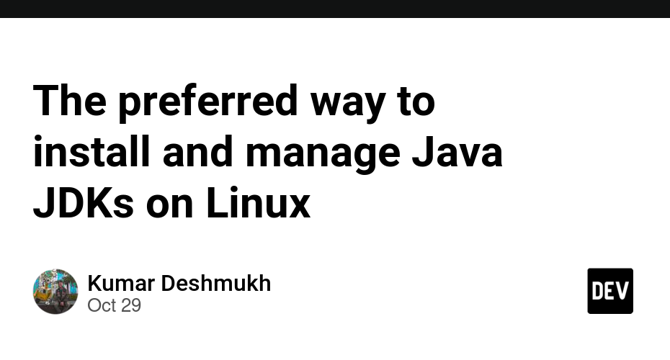Dev
2w
423

Image Credit: Dev
The preferred way to install and manage Java JDKs on Linux
- Java is already installed on some Linux distros by default, but usually just the JRE is installed and not the JDK.
- To verify if Java is installed, the 'java' command can be checked, and if JDK isn't installed, the 'javac' command won't be found.
- Fedora stores JREs/JDKs within /usr/lib/jvm. Look into its contents or query the available Java version installed in your system.
- To install OpenJDK, you can use Fedora's package manager 'dnf'. Use 'dnf search jdk' to get a list of available Java versions and package variants.
- To install the full JDK with all the necessary tools for Java development, you need the development variant of the package. It usually contains the '-devel' term suffix in the name for dnf.
- Oracle JDK can be installed by visiting the official Oracle SE Downloads page and downloading the appropriate package for your platform. It can be installed by double-clicking on the downloaded file and selecting Install.
- It is possible to work with multiple Java installations on Linux, and the 'update-alternatives' command manages the symbolic links comprising the alternatives system.
- To switch among available alternatives of a command, use 'sudo update-alternatives --config' followed by the command name.
- The 'JAVA_HOME' environment variable can be set to the JDK folder path, and the binaries within 'JAVA_HOME' like 'java' and 'javac' can be added to PATH.
- Manually setting the configuration through your shell profile should not be needed if you use the update-alternatives method to manage Java installations.
Read Full Article
25 Likes
For uninterrupted reading, download the app